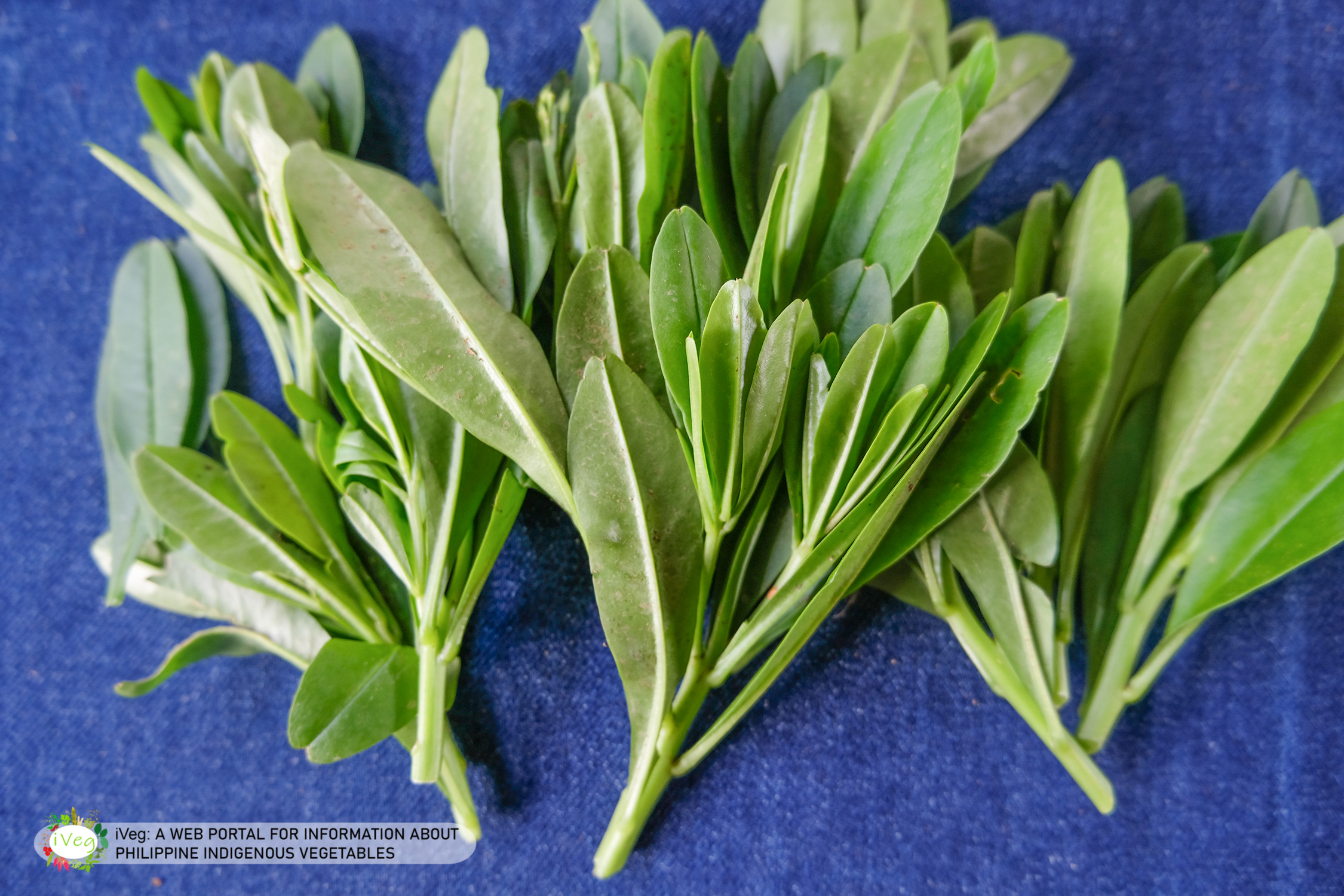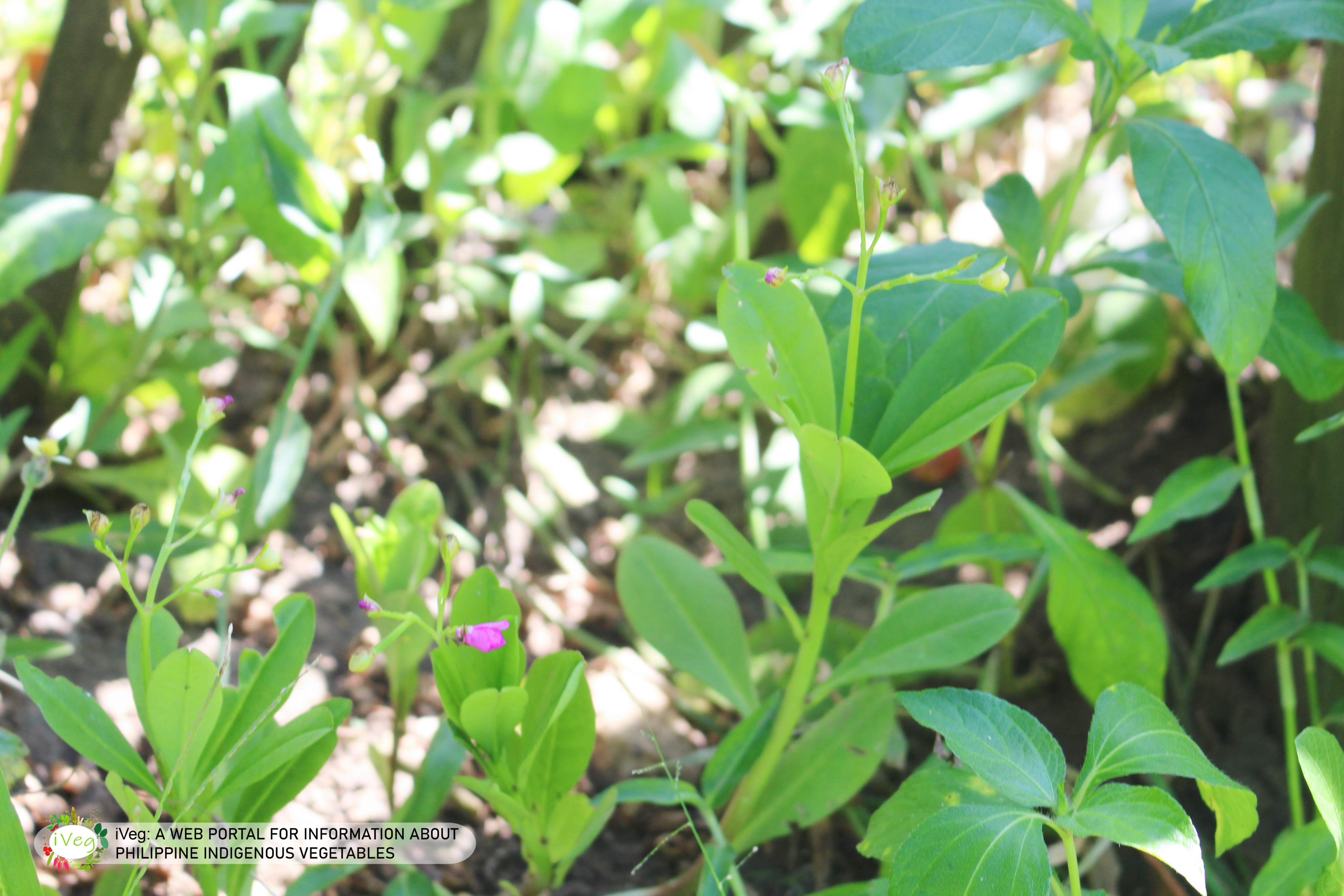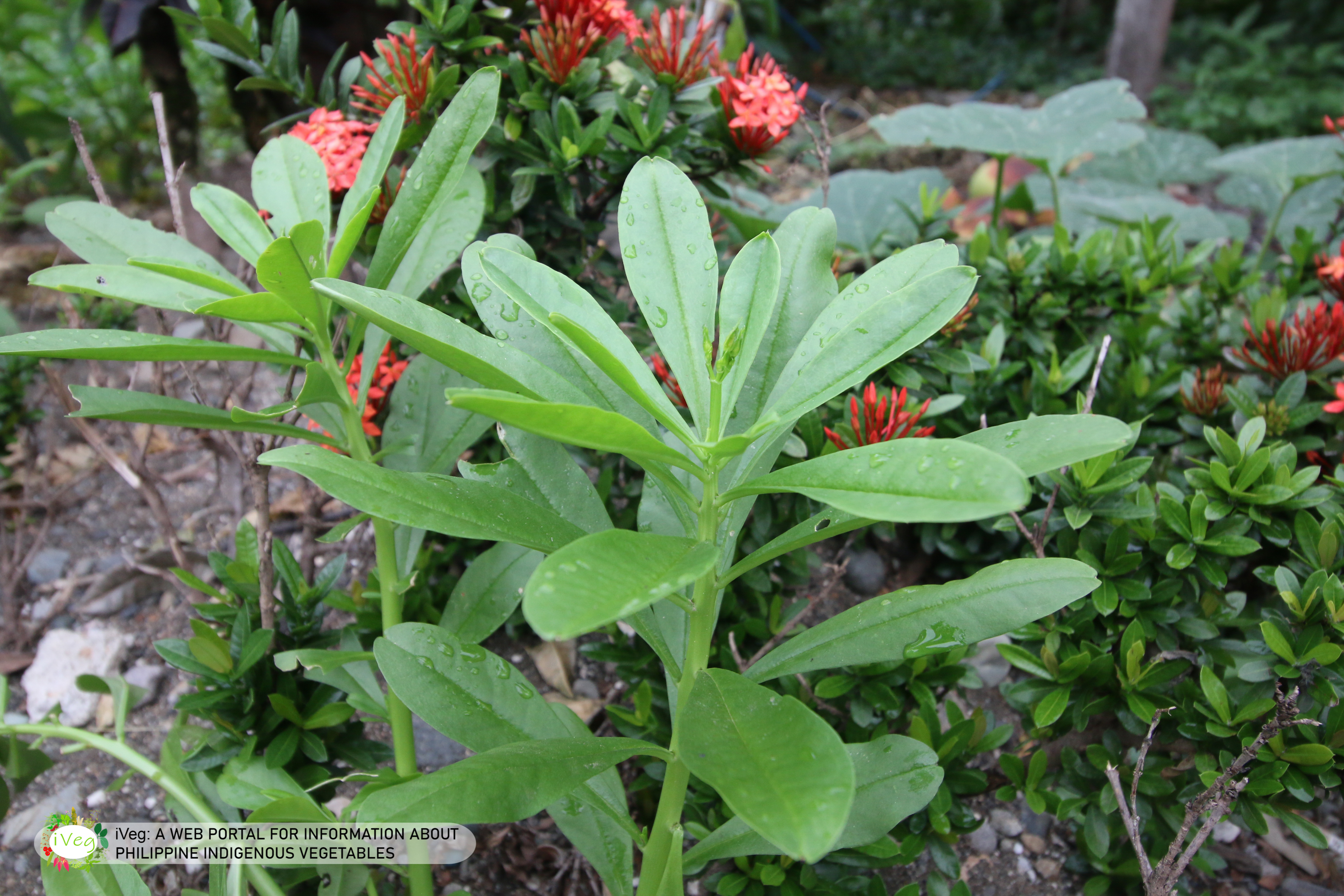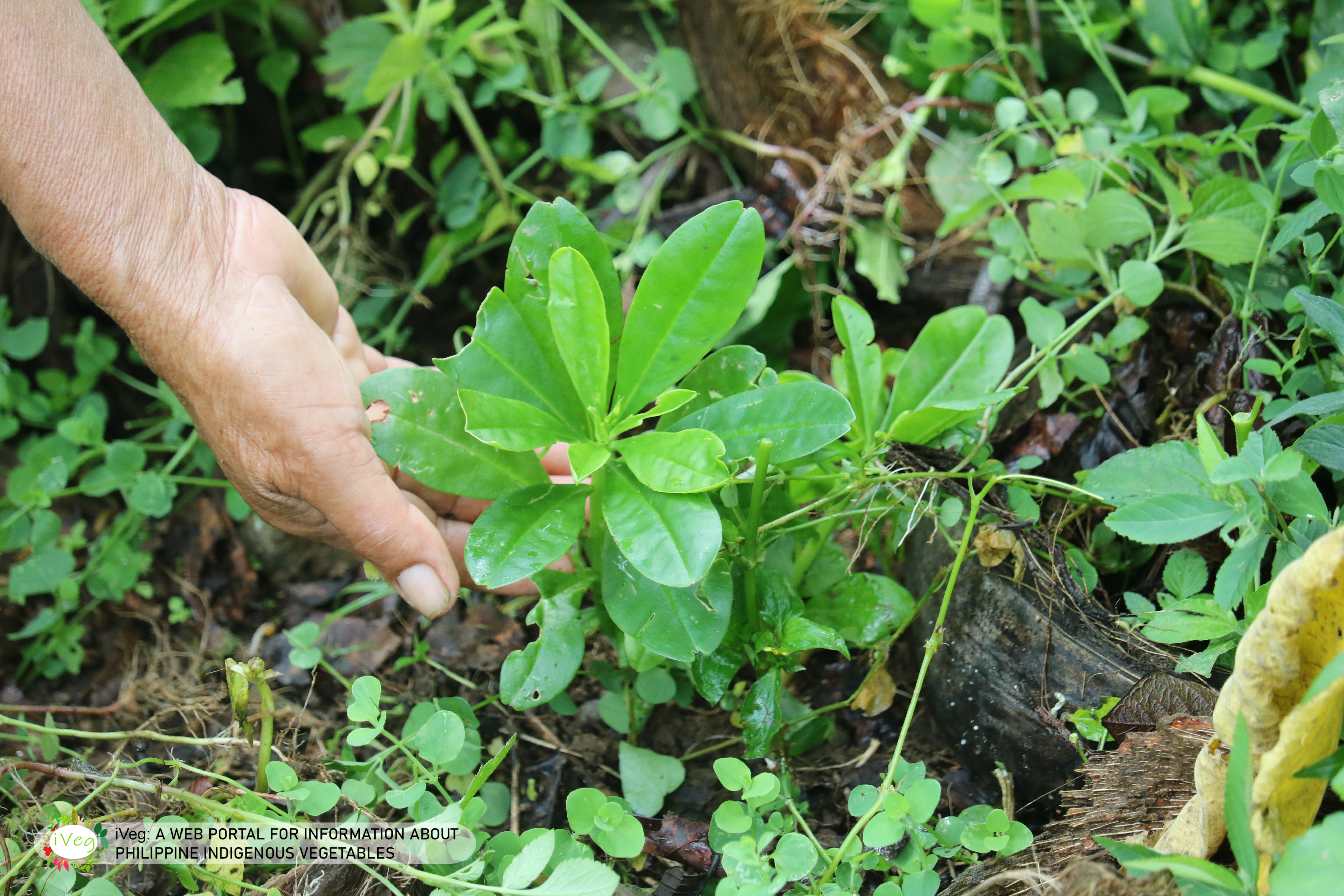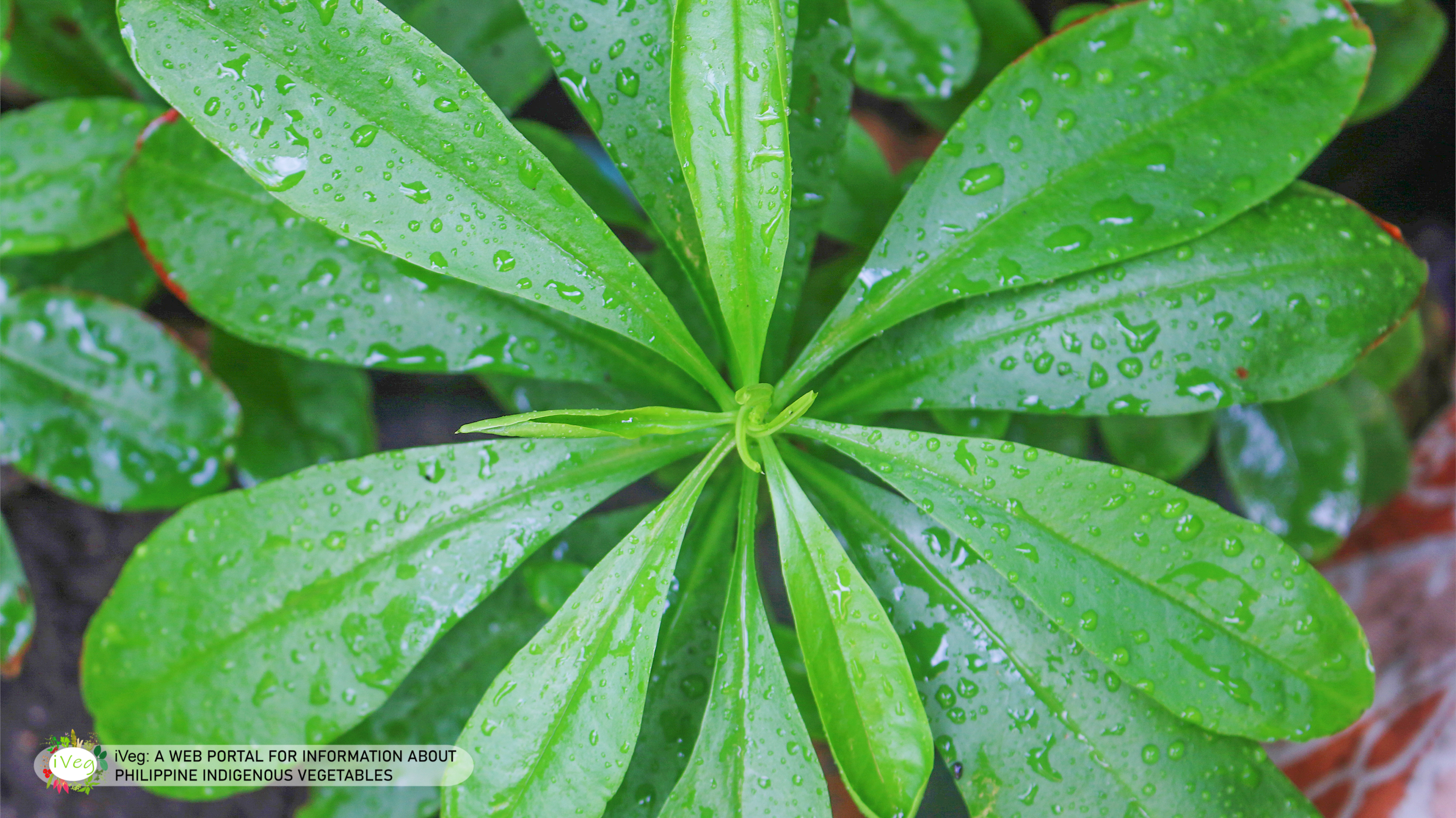Talinum/Talilong
Talinum triangulare (Jacq.) Willd.
Family:
Talinaceae
Synonyms:
Calandrinia andrewsii,
Calandrinia lockharti,
Calandrinia pachypoda,
Claytonia triangularis,
Claytonia triangularis var. crassifolia
Calandrinia lockharti,
Calandrinia pachypoda,
Claytonia triangularis,
Claytonia triangularis var. crassifolia
Philippine local names:
Talinum, Talilong (Tagalog, Ilokano), Galaghati (Subanen), Biala (Bisaya-Marinduque), Chinese Alugbati (Hiligayon) Simaron (Ilocano)
English Name: Philippine Spinach, Waterleaf, Fameflower, Sweetheart, Florida Spinach, Water Lettuce
Botanical Description
Talinum can grow up to one meter tall when without branches, but it is much shorter when it has branches. It has fleshy/succulent roots, stems and leaves that allow the plant to absorb more water. The leaves are shaped like a spatula and can have either a rounded or a notched tip. The leaves are arranged alternately or spirally at the upper part of the stem. At the lower part, they are arranged alternately.
Conservation Status
CONSERVATION STATUS. A widespread weed throughout the neotropics including Bolivia so can be categorised as Least Concern (LC) within the IUCN (2001) guidelines. source =https://www.researchgate.net/publication/257776539_Taxonomic_revision _of_Talinum_Talinaceae_in_Bolivia_with_a_note_on_the_occurrence_of_
Phemeranthus_Montiaceae
Phemeranthus_Montiaceae
Geographical Distribution
You may not notice, but you must have already seen Talinum randomly growing in your garden, backyard or other similar places. This is because the weed-like Talinum is a fast-growing herb that grows almost anywhere, from humid to dry environments and from ground level to sea level up to an elevation of 1,000 masl – all year round.
Agronomy Production Systems
Average costs and returns
in waterleaf production;
The average revenue from waterleaf
output was found to be N 411,721 per ha. The total cost incurred per ha was N 89,307. Labour had the highest percentage
of total cost of production with 58%, followed by planting materials with 33%. The total variable cost constituted 95% while
the fixed cost constituted just 5% of the total cost of production.
The enterprise had an average net income of N322,413 per
farmer per ha, in a production cycle of 14 months.
=https://journals.openedition.org/factsreports/438?file=1
in waterleaf production;
The average revenue from waterleaf
output was found to be N 411,721 per ha. The total cost incurred per ha was N 89,307. Labour had the highest percentage
of total cost of production with 58%, followed by planting materials with 33%. The total variable cost constituted 95% while
the fixed cost constituted just 5% of the total cost of production.
The enterprise had an average net income of N322,413 per
farmer per ha, in a production cycle of 14 months.
=https://journals.openedition.org/factsreports/438?file=1
Propagation
Talinum or waterleaf is usually propagated by seed. However, small seeds are difficult to collect because fruits readily or easily shatter. It can also be propagated using cuttings of 15-20 cm long which are taken from mature stems.
=Talinum production guide, BPI
=Talinum production guide, BPI
Marketing
Profitability: The Gross Income (GI) from the farms is affected by the level of production and its market price. The market price of any vegetables mainly depends on quality, bundle size/weight, seasons, demand and supply. The average market price of Talinum was estimated at USD1.50 kg-1
=file:///C:/Users/Indigenous%20Vegetable/Downloads/PDFDocument3270682.pdf
=file:///C:/Users/Indigenous%20Vegetable/Downloads/PDFDocument3270682.pdf
Part utilized as vegetables
Leaves
Uses
Food/ Edibility/ Culinary
Talinum Recipes; Talinum Salad, Spinach with Shrimp, Talinum and Mango Salad in Sweet Sugar Cane Vinaigrette Dressing, Stir-fried Talinum Tops with Oyster SauceFeed/ Fodder
their rich protein and mineral contents can be useful to improve the diets of pigs fed poorly balanced diets. The advantage of forage as pigs feeds however remains controversial as the economical and environmental implications at the farm level in mixed farming systems have seldom been quantified.
=https://www.researchgate.net/publication/47554298_An_Economic_Analysis_of_Talinum_triangulare_Jacq_ProductionFarming_in_Southern_NigeriaMedicinal
Talinum has many healing properties known from all over the world.
Crushed leaves are known to relieve swellings, inflammations or
sores while decoctions of the plant are used to relieve painful eyes
and to aid recovery from blows and falls. Leaf extracts have also been
proven to possess significant antioxidants. Aside from these, Talinum is
known to regulate blood sugar levels and cure hypertension.
In Sri Lanka, leaves and stems are used
to treat lung disorders, male infertility
and impotence, loss of energy, spleen
disorders, diarrhea, and dysmenorrhea.
In Indonesia, roots are made into a tonic
drink.
=iVeg pamphelts
The plant has a rich content of crude protein, total lipids, essential oils, cardiacglycosides, flavonoids and polyphenols. Preliminary phyto-chemical studies on T. triangulare revealed the presence of omega-3-fatty acids and high levels of essential nutrients like minerals (such as calcium, potassium and magnesium), soluble fibres (such as pectin) and vitamins (such as C, ? and ? tocopherols and ?-carotene) which are required for growth and development. The leaf extracts of waterleaf have been proved to possess remarkable antioxidant activity and high kaempferol content.
=Talinum production guide, BPISocio-cultural importance
Title:Economics Of Waterleaf (Talinum Triangulare)
Production In Akwa Ibom State, Nigeria
This study analyzed the profitability level of waterleaf production in three selected agricultural zones
of Akwa Ibom State, Nigeria. The study was based on primary data obtained from a random sample of 60 waterleaf farmers and analyzed using descriptive statistics, profitability ratios and regression analysis. The result of the
analysis shows that the majority (90%) of the farmers had some level of formal education. Labour had the highest
percentage (58%) of total cost of production, suggesting that waterleaf production was labour intensive in the
area. The average net income per hectare per waterleaf production cycle was N322,413 while the average total
cost was N89,307,18. Labour cost constituted the highest percentage of total variable cost. The profitability index (0.78), rate of returns on investment (361%), rate of returns on variable cost (482%), and operating ratio
(0.21) suggest that waterleaf production was profitable in the study area. The identified major factors that
enhance the output of waterleaf were the application of poultry manure, bigger household size (cheap labour),
level of education of the farmer and level of capital. These observations underscore the need for the provision of
credit facilities and some kind of adult education programme for the farmers. These will respectively ensure that
they apply the right quantity of purchased inputs (like fertilizers, hired labour and capital) in their production
process and improve their human capital.
=https://journals.openedition.org/factsreports/438?file=1
Correct Citation
Documentation of Indigenous Vegetables (2020) Retrieved from www.iveg.com.
See references:
https://www.researchgate.net/publication/257776539_Taxonomic_revision_of_Talinum_Talinaceae_in_Bolivia_with_a_note_on_the_occurrence_of_Phemeranthus_Montiaceaehttps://www.researchgate.net/publication/47554298_An_Economic_Analysis_of_Talinum_triangulare_Jacq_ProductionFarming_in_Southern_Nigeria
https://journals.openedition.org/factsreports/438?file=1
https://www.researchgate.net/publication/47554298_An_Economic_Analysis_of_Talinum_triangulare_Jacq_ProductionFarming_in_Southern_Nigeria
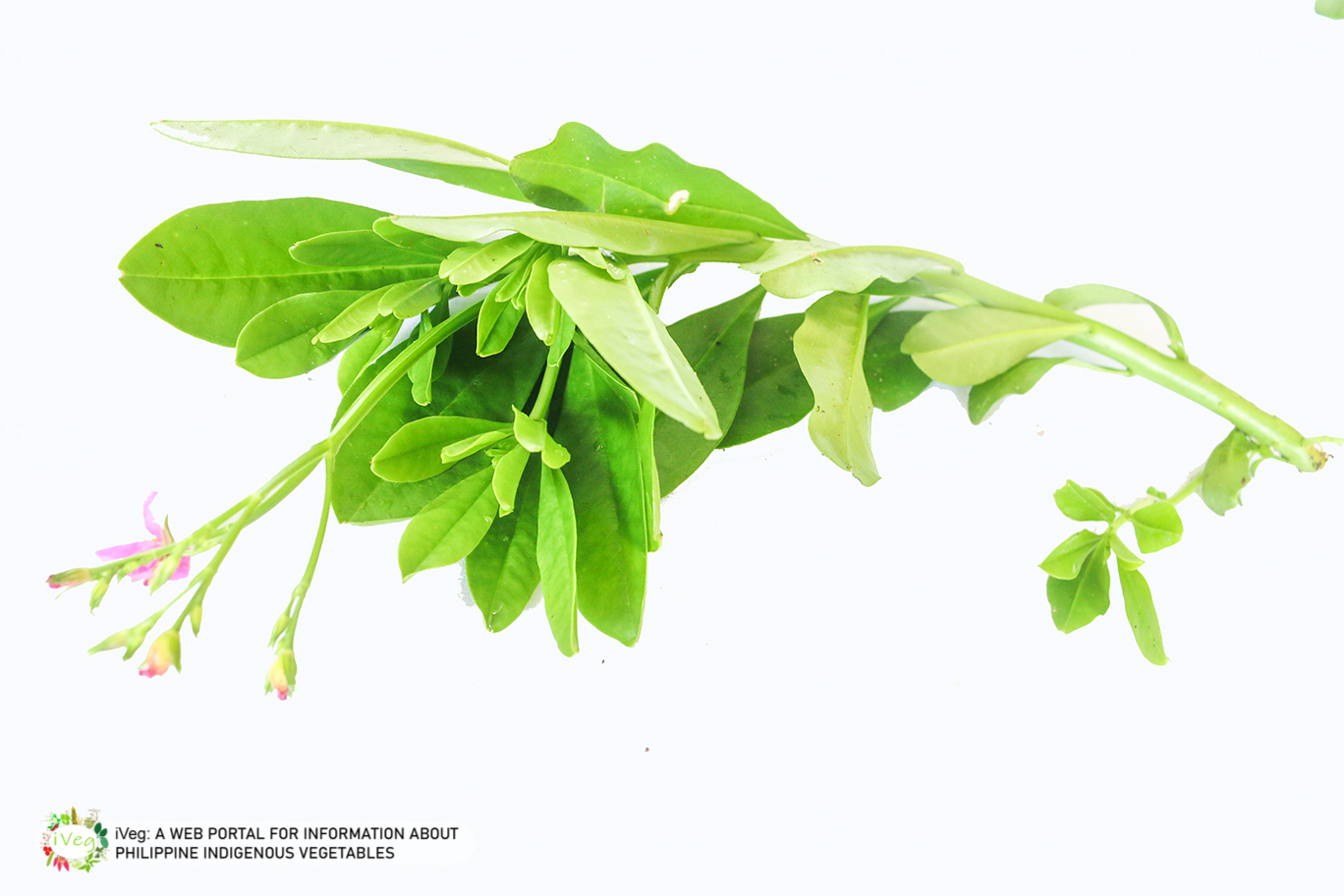
Leaves








Provinces where specific IVs were documented
 BatangasBukidnonCapizDavao del SurLeyteRizalSiquijorSouth CotabatoSurigao del NorteZamboanga del Norte
BatangasBukidnonCapizDavao del SurLeyteRizalSiquijorSouth CotabatoSurigao del NorteZamboanga del NorteMap Source: PhilGIS
Properties
Food Composition per 100g Edible Portion | Unit | Philippine spinach leaves | Philippine spinach leaves, boiled | ||||
|---|---|---|---|---|---|---|---|
| Water
Energy, calculated Energy, calculated Protein Total Fat Carbohydrate, total Carbohydrate, available Ash, total |
g
kcal kJ g g g g g |
91.7 29 123 2.7 0.5 3.5 1.1 1.6 |
93.8 23 98 0.8 0.2 4.6 2.8 0.6 |
courtesy of Food and Nutrition Research Institute Department of Science and Technology
